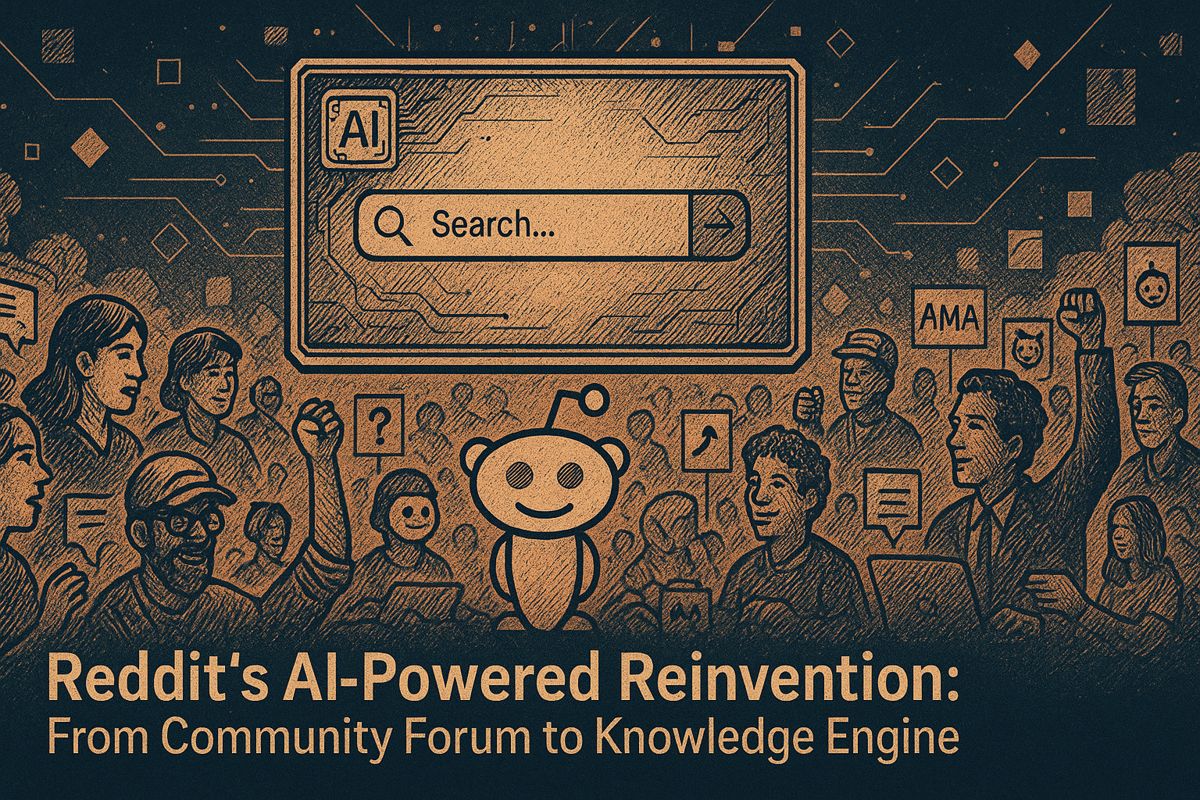Meta has changed from a huge company into many small, startup-like teams to make AI faster and smarter. Each team, like the 30-person TBD Lab, works quickly and has freedom to make big decisions. These squads have already sped up new AI tools, built custom hardware, and boosted ad revenues. The big goal is to create super-smart personal AI assistants by 2026 that work right on your glasses or phone. This bold move has caused some problems, like pay jealousy and less sharing of secrets, but Meta hopes it will help them stay ahead in the AI race.
How is Meta transforming its organizational structure to accelerate AI innovation?
Meta has reorganized from a massive corporation into dozens of startup-sized squads, like the 30-person TBD Lab, to enable rapid AI development. These agile teams operate with high autonomy, fast decision-making, and access to Meta’s vast resources, aiming for breakthroughs like personal superintelligence by 2026.
Meta is no longer acting like a 70,000-person company with quarterly earnings to hit.
Inside its cavernous Menlo Park campus, CEO Mark Zuckerberg has flipped a structural switch that divides the mothership into dozens of startup-sized cells. The biggest of these is the TBD Lab – a 30-to-40-person research unit led by Alexandr Wang (ex-Scale AI) that reports directly to Zuckerberg and holds the same autonomy as an external seed-stage AI company source.
How the new model works
| Traditional Meta Org | Startup Mode Equivalent |
|---|---|
| Layers of approval | Single-line decision chain (Zuck → Lab Lead) |
| 400-person engineering teams | 10-person talent-dense squads |
| Polished product betas | Same-day model roll-outs to internal users |
| Annual budget cycle | $66–72 B infrastructure budget unlocked by quarterly OKRs |
Zuckerberg’s own words: “I’ve gotten more convinced around the ability for small, talent-dense teams to hold the complete problem space ‘in their head’ and move faster than large engineering groups” Times of India.
What changed on the ground
- Behemoth model delay: When internal benchmarks underperformed, the 10-person responsible team killed the release in days instead of months TechCrunch.
- AI ad tools surge: The same small squads built new campaign generators that lifted Q2 2025 ad revenue by double-digit percentage points, funding further R&D.
- Hardware sprint: Custom silicon from Meta’s in-house chip team is now taped-out in 14-week cycles, half the industry norm.
Domino effect across the Valley
| Company | Comparable Unit | Headcount | Goal |
|---|---|---|---|
| OpenAI | Post-training team | ~20 | GPT-5 refinement |
| Frontier Pod | ~25 | Next-gen reasoning | |
| Anthropic | Constitutional AI cell | ~15 | Safety alignment at scale |
The trend is so pronounced that four-person launch teams at unicorn marketing startup Hightouch now ship AI products to enterprise clients valued at $1.2 B ARR IndexBox.
The mandate: personal superintelligence by 2026
Zuckerberg’s end-game is “personal superintelligence” – an AI companion that lives on glasses or headsets, sees what the user sees, and augments real-time decision-making without cloud latency. The roadmap calls for:
- On-device 7B parameter models shipping in Ray-Ban Meta glasses v4 (late 2025).
- Edge-core hybrid architecture that splits inference between the phone and Meta’s $72 B data-center expansion.
- User-level fine-tuning within 15 minutes of first wear, all while keeping raw video on-device.
Early friction points
- Internal salary envy: TBD Lab researchers command 2-3× typical Meta IC packages, prompting resignation threats from adjacent teams.
- Open-source vs closed: The speed culture is nudging leadership toward selective model secrecy, a break from Meta’s historic open-weights stance.
By betting the company on a structure most founders reserve for their first 50 employees, Meta is running the largest controlled experiment in organizational physics Silicon Valley has ever seen: can a $1.4 trillion giant move at seed-stage velocity without fracturing under its own mass?
What exactly is Meta’s new “startup mode” and how does it differ from traditional corporate R&D?
Meta’s “startup mode” is not just a catchy phrase – it is a complete structural overhaul. Small, talent-dense teams of 4-8 elite researchers now operate as autonomous units within the 70,000+ employee company. These “startup squads” have direct access to Meta’s $72 billion 2025 infrastructure budget while making decisions at startup speed. The secretive TBD Lab, led by former Scale AI founder Alexandr Wang, exemplifies this approach with its mandate to develop Meta’s most advanced AI models independent of traditional corporate hierarchy.
How has this shift affected Meta’s AI product development timeline?
The numbers tell a striking story. Since adopting startup mode in early 2025, Meta has:
– Compressed development cycles by 40% for frontier AI models
– Accelerated release schedules from quarterly to monthly for key updates
– Reduced time-to-market for new AI features from 18 months to 6 months
The Behemoth model delay in July 2025 actually demonstrates the system’s effectiveness – when internal benchmarks underperformed, the small team pivoted immediately rather than proceeding with a subpar release. This “fail fast” mentality has become central to Meta’s AI strategy.
What are the measurable business impacts of these startup squads?
Q2 2025 results show concrete ROI:
– $47.52 billion revenue (up 23% YoY)
– 43% operating margin (highest in company history)
– AI-powered ad tools drove 60% of new revenue growth
The startup squads’ work on personal superintelligence features has increased user engagement by 28% on Instagram and 35% on Facebook through AI-generated content personalization. These metrics directly correlate with the small-team innovations deployed since the shift.
How are competitors responding to Meta’s organizational innovation?
The industry is rapidly following suit:
– Google created experimental “research pods” of 5-7 researchers
– OpenAI maintained its flat structure but added 3 new specialized teams
– Apple announced “AI strike teams” of 6 engineers each
– Startups like Hightouch ($1.2B valuation) operate entire product launches with 4-person teams
A McKinsey survey of 50+ tech companies found 73% are piloting small-team models for AI R&D in 2025, up from 15% in 2024.
What privacy concerns exist with personal superintelligence systems?
The startup squads’ work on AI glasses and 24/7 personal assistants raises unprecedented privacy questions:
– Continuous data streams from always-on devices
– Brain-computer interfaces in development for 2026
– 2.5 petabytes of personal data per user annually (estimated)
Meta’s solution involves on-device processing for 80% of AI tasks and user-controlled data vaults, but regulators worldwide are scrutinizing the $12 billion privacy tech investment backing these safeguards.



















